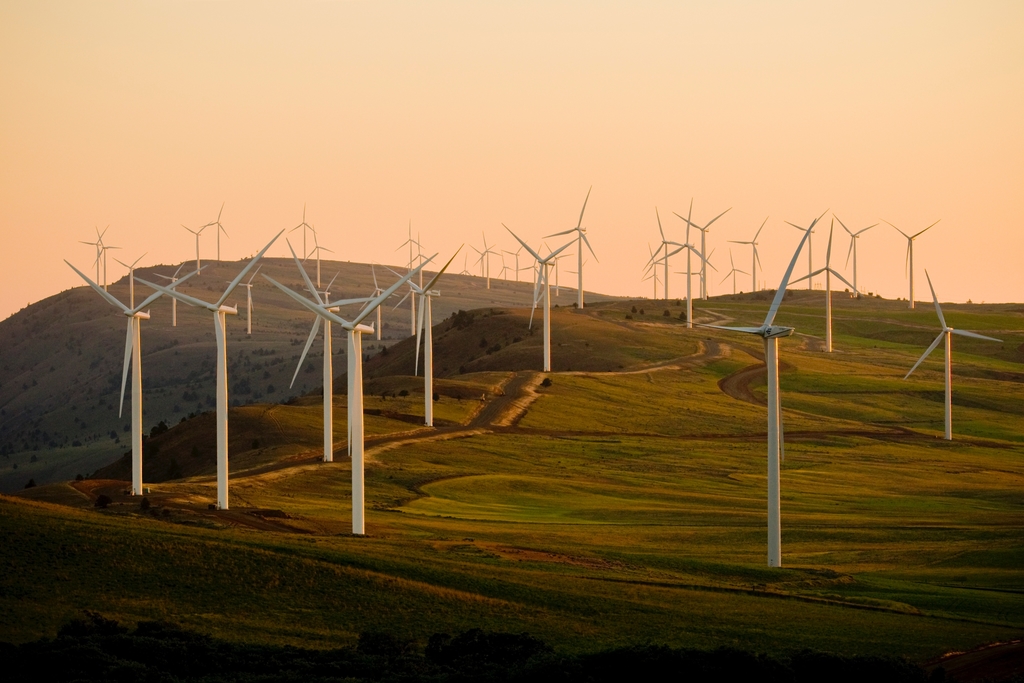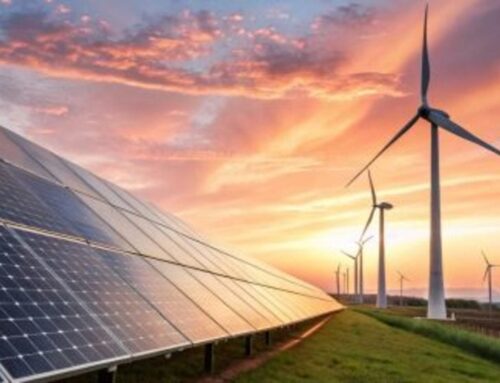The Race to Minimize Renewable Energy’s Impact on Nature
November 9, 2025
by Silvia Meloni
Nov 10th 20259 mins

The green energy transition is essential to cut carbon emissions but it also raises concerns over its potential impact on ecosystems. From solar farms sprawling across acres of land to hydropower dams affecting fish migrations, the global shift to renewable energy risks conflicting with nature.
—
Renewable energy production, derived from sunlight, wind, water and geothermal activity, reduces greenhouse gases, protects the climate, and offers a cheaper and more efficient alternative to fossil fuels. It represents a clear pathway for a healthier, cleaner planet. Worldwide, the deployment of renewable energy is accelerating to meet the terms of the Paris Agreement, which outlines a global commitment to limit the global average temperature increase to 1.5C compared to pre-industrial times.
But doubts remain over whether the rapid expansion of renewable energy infrastructure could harm ecosystems.
Indeed, while the environmental footprint of renewables is much lower than that of fossil fuels, meeting the growing energy demand of an expanding global population will require a significant increase in renewable infrastructure – both on land and at sea – that could impact species not previously exposed to energy development.
As the transition to renewable energy to tackle climate change continues, it is vital to consider the implications for wildlife and biodiversity. Efficient and sustainable use of land is crucial to optimize the environmental advantages while minimizing potential disruptions. Without careful planning and management, renewable power infrastructure’s expansion could drive a decline in biodiversity, particularly for threatened and endangered species.


Another notable concern is the lack of data to carefully map the impact of renewable energy. A 2024 report by the Organisation for Economic Co-operation and Development (OECD) highlights how the evidence for the clean energy impacts on biodiversity presents severe gaps in geographic and zoological areas. For example, the impacts of wind power on terrestrial ecosystems are more closely studied than those on marine ecosystems. Similarly, most detailed data reports come from Europe and North America, while significant gaps persist in developing countries, where most new renewable energy development projects are occurring.
Solar farms are large-scale installations of photovoltaic panels, designed to capture sunlight and convert it into electricity. They produce renewable energy with zero operational carbon emissions and play a key role in the production of clean energy.
The number of farms has surged in recent years, thanks to a combination of technological advancements that made solar panels cheaper and more efficient. Growing awareness of the impact of fossil fuels is also resulting in more green investments and increased government incentives.
While the energetic sustainability of solar panels is undeniable, a common concern regarding solar farms is the land footprint required to build them. These concerns are reasonable: solar farms demand the transformation of large swaths of territory to be operable, which can cause loss of natural habitats, displacement of native animal species or disrupture of their migration routes, and the overall degradation of the affected area. However, the consequences that solar farms yield on the surrounding nature are generally context specific, varying depending on geographic location and previous human activity on the land.


Installing photovoltaic structures in uninhabited natural regions can have a major negative influence on the environment, due to the land clearing and the loss of vegetation necessary to make way for access roads and infrastructure required for installation, maintenance, and operations. In the US, a significant portion of solar installations have been or are being built on agricultural lands.
In response to these challenges, the last few years have seen a surge in ecovoltaics, an approach to photovoltaics that prioritizes ecological design and management. Without impacting energy productivity, ecovoltaics try to balance energy production and ecological services together.
In fact, in areas already anthropized and impacted by human activities, well-managed solar farms have been shown to actually have a positive effect on biodiversity. Research highlighted that solar farms may actually play an important role in nature restoration. Ultimately, it all comes down to the efficient use of the land underneath and around the solar panels.
The vast amount of land necessary to install the panels leaves a lot of room for planting native hedgerows and field margins around them. These plants can act as a buffer for restoring soil health and topsoil potentially disrupted during installations. Biodiversity can be further enhanced by digging ponds, while the bunds of displaced dirt can be left in place, allowing brush and shrubs to grow organically. Because hedgerows, bush, water, and grasslands provide habitat for insects and invertebrates, they will in turn attract small animals, amphibians, reptiles, and birds that feed on them.
The panels also create small microclimates due to the shade they produce, cooling the soil underneath and in turn allowing more plants to proliferate, preventing the evaporation of rain water, and offering relief for grazing animals.
Supporting evidence for these benefits can be found in the UK, where solar farms in East Anglia support a greater diversity of vegetation and animal species. Farms that had been managed with an ecovoltaic approach noted a diverse range of plant, bird and mammal species than the surrounding arable land.
Another positive environmental consequence of solar farms is brownfield redevelopment. Brownfields are degraded lands that have been abandoned due to previous human activity that polluted and deteriorated the area. Common brownfields are generally former industrial sites, as well as abandoned farms, mines, or landfills.
This redevelopment approach helps avoid the conversion of agricultural land or natural habitats by sitting photovoltaic installations on already affected land. In addition to limiting potential habitat loss, cleanup measures required for redevelopment can reduce pollution risks and improve soil quality, contributing to environmental restoration of hazardous sites. Furthermore, many brownfield sites already have existing infrastructure (such as transmission lines and access roads), which gives the great advantage of connecting solar panels to the grid without new constructions.
Wind power is one of the fastest growing sources of energy worldwide. Modern wind turbines have the lowest greenhouse gas emissions of all renewable energy sources, and are remarkably cost and energy efficient as they depend on an inexhaustible and unlimited energy source.
In many ways, the rapid growth of wind energy infrastructure has raised environmental concerns that largely mirror those associated with solar farms. Expanding capacity requires converting large areas of land for solar farms installations, which can lead to habitat loss and disturbance of wildlife.
Bird and bats are most affected by wind turbines: collision, noise, and alteration of migration pattern to avoid wind farm areas are common consequences. Small passerine birds alone suffer approximately up to 230,000 fatalities annually in the US and Canada from collisions with wind turbines. For offshore farms, in addition to similar risks for sea birds, there are also impacts on marine life at large, especially fish habitats and the disruption caused to the seabed for building the necessary infrastructure.
While the risks are real, there are actual, promising initiatives to reduce them. One of the most cited innovations is blade painting (“black blade”) interventions: research conducted by the United States Geology Survey (USGS) suggests that painting just one of the three turbine blades black can reduce casualties by providing bird flocks a stronger visual cue that the airspace is obstructed. These results were replicated in a similar study in Norway, where “black blade” interventions led to a 71.9% reduction in avian fatalities.
In addition to blade painting, new monitoring technologies and conservation-led project development can also help minimize the impact on wildlife, both onshore and offshore. Furthermore, on-shore wind sites can incorporate habitat improvement strategies similar to those adopted in solar farms: strategic siting to avoid major migration corridors and breeding grounds, native grassland restoration beneath and around the turbine area, and adjusting operation during peak migration season can help offset habitat loss and potentially improve local biodiversity.


Overall, the carbon-benefits of wind turbines remain significant. The collision risks for wind turbines, though serious, are still relatively small when compared to other anthropogenic mortality causes (for example, impact with vehicles, pollution, deforestation), and could further be reduced by mitigation. The USGS study estimated 368,000 deaths annually in the US and Canada for all bird species from turbine collision – far lower per-species mortality rates and lower overall than many other threats.
Hydroelectric power, or hydroelectricity, is energy generated from water power: the water, collected in huge reservoirs most commonly obtained from dammed rivers, is used to power turbines connected to generators that produce electricity. Currently, it supplies over 15% of the world’s electricity, making it the largest renewable energy source in the world, and accounting for nearly half of all renewable power generation.
Despite its sizable production of renewable energy, the dams needed to operate hydropower plants have devastating ecological effects. The main cause is perhaps the most obvious: a dam is a physical barrier that fragments the river, blocking the flow of water, sediments, nutrients, and wildlife, causing long-term environmental damages. As rivers are incredibly rich and diverse ecosystems, this interruption is catastrophic for the fragile and interconnected life cycles. The more dams are built within a river system, the more severe are the cumulative impacts.
Breaking the natural flow of a river, a dam splits the stream into a lake-like system: here, the reservoirs prevent upstream species from getting to tributaries where they can breed, while downstream populations are unable to reach feeding or spawning habitats upstream. In Europe, the continent with the most fragmented river landscape on the planet, freshwater fish populations have collapsed by 93% since 1970. Worldwide, the rate of riverine wildlife loss is six times that of land and sea animals. Beyond fish, dams disrupt the entire surrounding ecosystem, including mammals, birds, amphibians, insects, and plants. Many species of freshwater fauna, like otters, beavers, and turtles, lose their native territories across the riverbank.
The disruption of a river’s natural temperature, sediments, and oxygen levels also severely deteriorates water quality. Dams create deep, stagnant reservoirs where oxygen diffusion from the atmosphere is limited, especially during summer. Heavier organic matter, unable to flow freely, sediments to the bottom and decomposes, releasing methane and phosphorus. In these environments, the bottom layers deprived of oxygen facilitate the blooming of toxic algae and cyanobacteria (the ‘green-blue algae’), harmful for animals, people, and plant life.
It is a huge dilemma: while hydropower supports decarbonisation and produces large quantities of renewable energy, the construction of dams is detrimental both for ecological balance and human livelihoods.
More on the topic: Dams: Economic Assets or Ecological Liabilities?
To address this growing crisis, conservation strategies increasingly focus on selective dam removal in order to restore as many free-flowing sections as possible. In France, the removal of hydroelectric dams of La Roche-qui-boit and Vezins, built on the Sélune river, in 2022, quickly reversed the ecological damages caused by the reservoirs. Parameters such as water temperature, turbidity, and oxygen content were restored to those of natural free-flowing rivers within months. Restoration efforts want to ensure the return of a numerous population of Atlantic salmon and other native fish species.
Many countries are also adopting solutions such as fish ladders and other passages where wildlife can still move across existing dams.
Smarter siting, wildlife-friendly turbine design, habitat restoration, stronger community consultation, and the integration of biodiversity safeguards into global climate finance are all essential strategies for ensuring that the energy transition is both sustainable and ecologically sound.
Ultimately, it is important to acknowledge that all human activity inevitably affects biodiversity. Achieving energy generation that leaves no environmental footprint is not a realistic goal. However, adopting a harm-reduction mindset, one that seeks to minimize ecological disruption while maximizing environmental benefits, offers a pragmatic and necessary path forward. In this respect, renewable energy holds a significant advantage: it produces minimal carbon emissions and generates far less toxic waste compared to conventional fossil fuels.
By contrast, the extraction and combustion of coal, oil, and gas not only devastate terrestrial and marine ecosystems through drilling and seabed disruption, but also release enormous quantities of CO2 that accelerate global warming and further threaten the health of the planet. This double impact is one of the most direct causes of the current climate instability.
Renewable energy, therefore, remains the most viable and responsible option. When accompanied by thoughtful and conservation-oriented planning and the integration of biodiversity considerations into every stage of project development, it represents the best possible balance between meeting human energy needs and safeguarding the natural world.
Our non-profit newsroom provides climate coverage free of charge and advertising. Your one-off or monthly donations play a crucial role in supporting our operations, expanding our reach, and maintaining our editorial independence.
About EO | Mission Statement | Impact & Reach | Write for us
Tagged:
Decarbonization Energy transition Renewable energy solar energy wind energy
Search
RECENT PRESS RELEASES
Related Post



